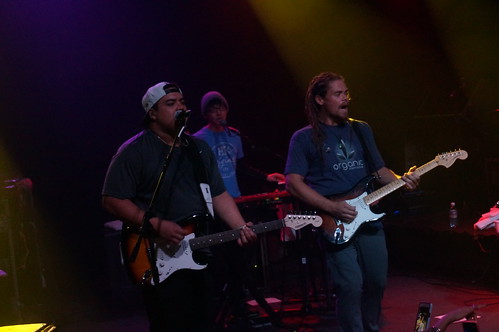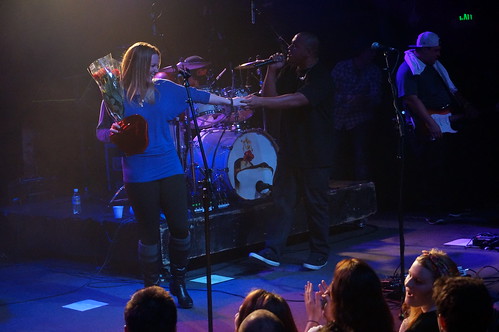Like most of us, I'm in thrall to Google. It's hard to track all the strands of how I'm tethered to them: my email server, my blog platform, cloud storage..the list goes on and on. They make it so easy because all of this stuff is more or less free. Actually, it's paid for by choosing to accept that they'll own all my metadata and connect the dots to know everything about me, from what my likely politics and income are to what kind of porn I'm interested in. It's kind of disturbing if you think about it for too long, but we're a captive audience with limited alternatives.
Google has so many balls in play, it's hard to keep track of them -- they are legion, after all -- but a particularly ugly one just caught my attention. I was listening to Zoë Keating on the February 5th episode of Studio 360, where she talked about her negotiations with Google over changes to their music services agreement. This has been percolating for months, but Keating's recent blog post has generated another round of attention. In a nutshell, Google is consolidating their contracts with artists to optimize their free YouTube and premium Google Play/Music Key services. Simplification is not a bad thing, but the devil is in the details...and these details stink.
What it comes down to is that Google is a jealous god. They are demanding that artists provide their entire catalog of work to Google and that no third party outlet should have earlier access to that material. In exchange, they're offering relatively crappy royalty rates and the privilege of not kicking them off Google's content services. This is especially problematic for independent artists like Keating or Jill Sobule, who have organically developed their fan base and make their music available via their own websites or third parties like Bandcamp. This would effectively mean that they couldn't release directly to their fans before making it available to Big G.
It's easy enough to see the business motivation here. It's harder to justify paying for a premium music service if you can get new music somewhere else first. It also makes sense to have the same rules for all of their content delivery services. It's all very convenient. Still, it's hard to see why Google absolutely has to have exclusivity. It seems like it would be sufficient for them to assert that music available on YouTube should also be available on Music Key. Allowing artists to control their own material isn't all that different from letting me decide whether to write an article for a blog post or for a media site. Google could continue monetizing the content that they have access to and the synergy of services they offer will make participating that much more attractive. If Google could settle for that, they wouldn't come across as bullies, crushing indie artists for legal expedience.
On the other hand, if they hold their ground and either screw or blackball indie artists, it's hard to see them as anything but evil. A bland, pedestrian evil, but still just as distasteful.




 It's not that hard to see why
It's not that hard to see why 

 Music reviews shouldn't start with a history lesson, and ska fans are already familiar with the twists and turns of how Jamaica’s interpretation of R&B evolved through the Two-Tone revival, leading to third wave’s pop punk approach. A review would come in handy in this case, though, because
Music reviews shouldn't start with a history lesson, and ska fans are already familiar with the twists and turns of how Jamaica’s interpretation of R&B evolved through the Two-Tone revival, leading to third wave’s pop punk approach. A review would come in handy in this case, though, because 









 Carrying on the family business is a long-standing tradition and the entertainment industry is no different. But even talent and the support of famous parents are no guarantee for success. Now put yourself in Julian Lennon's shoes or imagine the Marley offspring, trying to make a mark with the burden of a mythic, almost saintly father. They've each had to carry that weight and face down the unmeetable expectations. But where Julian Lennon has never completely exorcised his father's ghost, the Marleys have overcome the overblown hype and dismissive critics to prove that they had more going on than just their celebrity genetics. Eldest son Ziggy probably faced the harshest criticism, but his younger brothers have each taken their turns, too. With perseverance, they've gone on to earn Grammys and chart success while finding their own voices. In recent years, brothers Stephen, Julian, and Damian Marley have focused their attention on their label,
Carrying on the family business is a long-standing tradition and the entertainment industry is no different. But even talent and the support of famous parents are no guarantee for success. Now put yourself in Julian Lennon's shoes or imagine the Marley offspring, trying to make a mark with the burden of a mythic, almost saintly father. They've each had to carry that weight and face down the unmeetable expectations. But where Julian Lennon has never completely exorcised his father's ghost, the Marleys have overcome the overblown hype and dismissive critics to prove that they had more going on than just their celebrity genetics. Eldest son Ziggy probably faced the harshest criticism, but his younger brothers have each taken their turns, too. With perseverance, they've gone on to earn Grammys and chart success while finding their own voices. In recent years, brothers Stephen, Julian, and Damian Marley have focused their attention on their label,